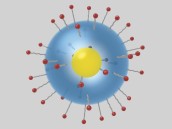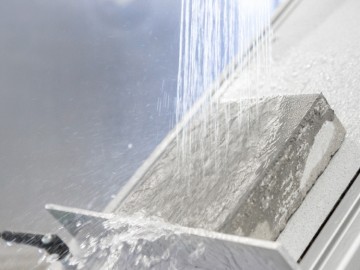
Building a Revolution
In the construction sector, as in other industries, trends come and go. Some of them are short-lived, others, however, have what it takes to start a revolution. The polymer modification of building materials for example: started by WACKER in the 1930s, it has strongly influenced our way of building and become a standard procedure in global construction.
Better Building Materials with Polymer Dispersions
Today, polymer modification of building materials is a standard procedure worldwide. With the success of the dry-mortar industry, dispersible polymer powders in particular have been trending upward for decades. Nevertheless, there are applications and markets where dispersions are still the best choice for polymer modification. WACKER offers a customized portfolio for precisely these cases.

A Pioneer in Polymer Dispersions
In 1938, WACKER was one of the first chemical producers to recognize the potential uses of polymers in the construction industry. Since then, our VINNAPAS® polymer dispersions and powders have helped trigger and then guide decisive innovations in construction materials. Today, with an extensive and innovative portfolio, WACKER is the global market leader in many applications.
A Brief History of VINNAPAS® Dispersions
1938:
WACKER produces the first poly(vinyl acetate) dispersions on an industrial scale.

1955:
The first VINNAPAS® copolymer dispersions eliminate the need for plasticizers.

1960:
WACKER develops vinyl acetate-ethylene (VAE) copolymer dispersions, which remain essential components in many modern sustainable applications.

1962:
The first terpolymer VINNAPAS® dispersions with vinyl chloride are developed, specifically as binders for construction applications.

1964:
VINNAPAS® copolymer EP dispersions for water-based adhesive are launched.

1985:
A dispersion based on VAE can be used to manufacture VINNAPAS® polymer powders.
1998:
A joint venture with Air Products and Chemicals (AP) lays the foundation for global success.

2008:
By acquiring shares in Air Products, WACKER strengthens its global position and market leadership in all key markets.

2013:
WACKER celebrates the 75th anniversary of VINNAPAS® dispersions.

2020:
In a first, WACKER offers VINNAPAS® grades based on acetic acid from renewable resources under its trademark VINNECO® (today: the VINNAPAS® eco product line) to save fossil resources in the supply chain.
Today, 15 technical competence centers worldwide develop and test formulations for customers in the construction sector.
Two Heroes for Big Tasks
VINNAPAS® dispersions are co- and terpolymers based on vinyl acetate, ethylene and other monomers. All grades are produced worldwide according to the same quality and environmental standards. Within this portfolio, two groups of polymers stand out: vinyl acetate-ethylene (VAE) dispersions and silanized styrene-acrylate (S/A) dispersions.

Vinyl Acetate-Ethylene (VAE) Dispersions
VAE dispersions combine technical performance with environmental benefits at an attractive cost-in-use ratio. They enable high-performing construction materials that meet stringent governmental regulations, as well as the requirements of internationally recognized ecolabels and certifications, such as Blue Angel, Green Seal GS-11, TÜV Süd and EMICODE EC1 plus.
VAE dispersions are produced by the emulsion polymerization of the hard, polar monomer vinyl acetate and the soft, hydrophobic monomer ethylene which functions as an optimum flexibilizer for vinyl acetate. Consequently, the use of plasticizers can be significantly reduced.

Silanized Styrene-Acrylate (S/A) Dispersions
S/A dispersions combine the benefits of polymer chemistry and silicone chemistry in a special technology that produces homogeneous dispersions with features that include excellent stability, good pigment and filler compatibility, and exceptional water resistance.
Conventional composite systems produce dispersions through mixing or encapsulation based on emulsion polymerization. This generally leads to inhomogeneous systems with stability and compatibility problems. VINNAPAS® dispersions are produced by treating the surface of silica sols with reactive organic copolymers. This makes them very homogeneous and stable, with unique properties such as hardness, thermostability, durability, hydrophobicity and UV stability.
Best-in-Class Solutions
VINNAPAS® construction dispersions offer best-in-class solutions for different systems and a variety of applications. The portfolio comprises proven solutions that have been optimized for decades and innovative dispersions to meet future challenges.
A Deep Dive into the Exciting World of VINNAPAS® !
Since their market launch, WACKER’s VINNAPAS® polymer dispersions and powders have paved the way for decisive innovations in construction materials and in the construction sector. Their unique properties and versatility make them a perfect choice for a broad range of applications, such as primers and adhesives, waterproofing membranes and thick coats.
Download our interactive pdf to learn more about VINNAPAS® construction dispersions, their history, unique properties and typical applications.





